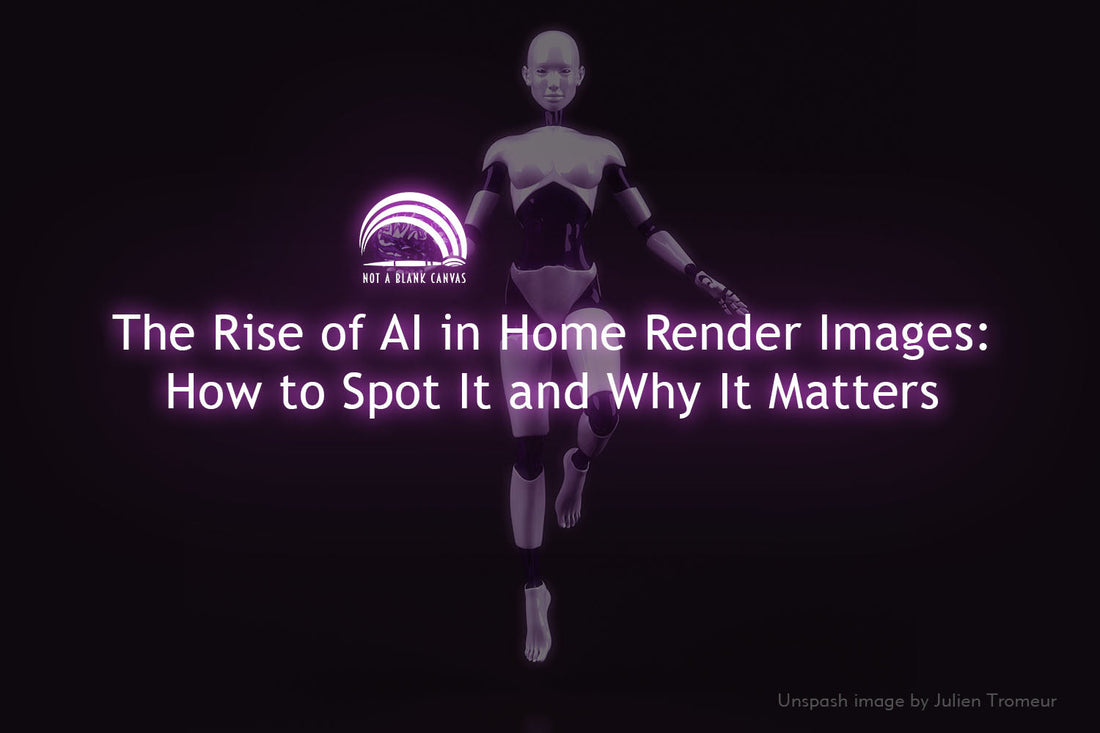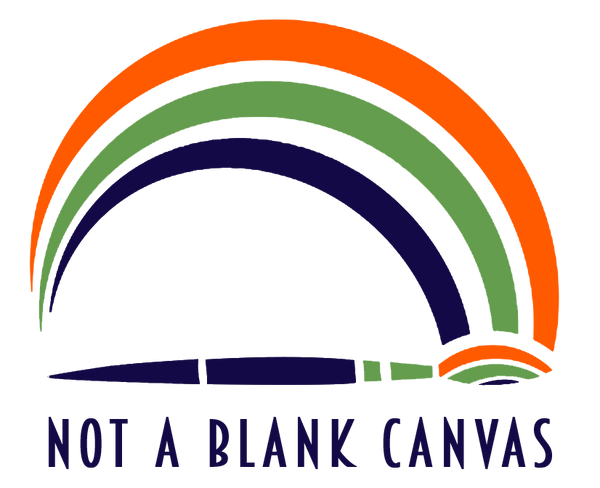
The Rise of AI in Home Render Images
Share
How to Spot It and Why It Matters
Scroll through any home design inspiration group on Facebook, and you’ll be met with a flood of beautiful interiors. But look closer, and you might start to notice odd details - chairs floating slightly above the floor, plants that seem to dissolve into the air, drawer knobs that don’t match or are spaced inconsistently. These are all tell-tale signs that the image you’re admiring isn’t a real home at all, but an AI-generated render.
Why Are People Using AI for Home Design?
There are many reasons why AI-generated images are flooding home décor communities:
- For Inspiration – AI can generate endless variations of a style, helping people explore ideas they might not have thought of.
- Because They Can’t Find What They’re Looking For – Sometimes, a specific vision isn’t available in real-life photographs or existing renders, so AI fills the gap.
- It’s Free and Instant – Instead of hiring a designer or spending hours on Photoshop, AI can generate an image in seconds.
- Social Media Engagement – AI-generated rooms often have an aspirational quality, making them highly shareable and great for racking up likes.
The Problems with AI-Generated Home Images
Despite their appeal, AI home renders come with several issues:
1. Unrealistic Expectations
People planning renovations or redecorations may fall in love with an AI-generated image, only to be disappointed when they can’t recreate it in real life. AI doesn’t have to worry about physics, material limitations, or real-world costs, meaning many designs are completely impractical.
2. Energy Consumption and Environmental Impact
AI image generation is computationally intensive, requiring vast amounts of energy. The more AI is used for frivolous purposes like creating imaginary interiors, the larger its environmental footprint grows.
3. Ethical Concerns: Image Theft and Copyright Issues
AI models are trained on vast datasets that often include copyrighted images without permission. This means an AI-generated home render may unknowingly borrow elements from real photographers, designers, and artists, raising serious ethical concerns.
4. Dilution of Real Design Expertise
AI can generate beautiful images, but it doesn’t understand design principles in the way a professional does. Overreliance on AI may undervalue the skills of architects, interior designers, and artists who create well-thought-out, functional spaces.
5. The Growing Issue of Misinformation
One of the most worrying aspects of AI-generated home renders is that many people cannot distinguish them from real images. This leads to a situation where individuals are misled—whether it’s an unrealistic home design idea, an impossible furniture arrangement, or even deceptive marketing. I saw a post today claiming the room was painted in a particular brand's paint colour and yet the kitchen in question doesn't actually exist in a real setting. This could cause serious confusion, leading homeowners to make purchases based on visuals that are entirely fabricated.
How to Spot an AI-Generated Home Render
AI-generated images can be incredibly convincing at first glance, but certain giveaways can help you identify them:
1. Floating or Disjointed Objects – A shelf that seems to hover with no visible brackets, a coffee table that isn’t quite touching the floor, or curtains suspended in mid-air.

Or in this case, floating pans and kettles without handles

2. Inconsistent or Mismatched Hardware – Look closely at doorknobs, drawer pulls, and cabinet handles. AI often struggles with consistency, generating different styles or irregular spacing.

How many knobs do you need? And are they cup handles or traditional knobs?

3. Weirdly Rendered Plants – Leaves may have an unnatural texture, stems may merge into furniture, or the plant pot may simply vanish at the base.

Not sure who arranged that plant, but I'd be asking for my money back...
4. Distorted Textures and Patterns – A wood grain that doesn’t quite match the perspective of the furniture, tiled flooring with misaligned grout lines, or rugs that fade oddly into the floor.

AI clearly struggles with what are supposed to be beautiful tiles and the rug simply fades into the floor in the corner.

5. Strange Light and Shadows – AI struggles with physics, meaning shadows might be inconsistent or light sources may not match the scene’s illumination.
6. Corners, Coving, and Architecture Issues – Coving that disappears into a wall, walls meeting at unnatural angles, or doors that don’t seem to have proper frames.

One of my favourites. Is that a bath for hobbits? I've never seen a spiky chandelier like that. Very interesting coving. Wow, that plant looks like it's growing out of the wall!

7. Unusable or Impractical Layouts – A fireplace directly under a window, a sink with no plumbing space below, or a room packed with furniture that would be impossible to move around in.

Or how about 3 different types of flooring, including pebbles in your kitchen-diner and not 1, not 2, but 3 taps! Can't promise they all have sinks to go with them...

The Takeaway
While AI-generated home images can be fun and inspiring, they should be taken with a pinch of salt. Learning to recognise them helps you set realistic expectations for home projects, appreciate real design expertise, and be mindful of the ethical and environmental implications of AI use. Next time you see a ‘perfect’ interior online, take a closer look—chances are, it might not be real at all.
One thing you can be sure of is that my artwork is all 100% human-generated. You can see all my behind-the-scenes painting processes over on my Instagram!
Bonus!
Let's play a game. I'm going to call it AI-dentified! See if you can spot the tell-tale signs that these images are AI below.
We'll start with an easy one...

Honestly I couldn't even bring myself to circle this one... if you couldn't tell this one was AI, well there's no hope for you!

Ok, that one was a bit harder. Let's see if you got them all! Maybe you even found more than me.


Alright, that was tough! The big giveaway is window panes on one side of the window, but not the other. The bar stools are all slightly different too and are missing support rungs on the legs - anywhere there should be symmetry is usually a big giveaway.


AI always has that "too-smooth" look as well. Zoom in and you'll notice the unrealistic textures.


Melted handles and asymmetrical cupboards belie this image!


Take a close look at the textures and the door handles in this one.
Ready for the last one?

Aha! That was a trick question. I can promise you this one is real.

Here we all are at my hen party 4 years ago in front of Pink Canopy as a wall mural. They do make the perfect backdrop!
Alright then! Did you manage to AI-dentify all these interiors? Will you now be an AI sleuth the next time you see an inspiration image online! Let me know in the comments!
And don't forget to check out my wallpaper murals to create your own real life stunning interiors.
